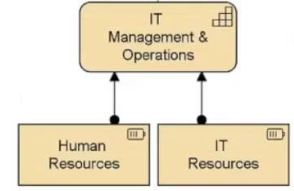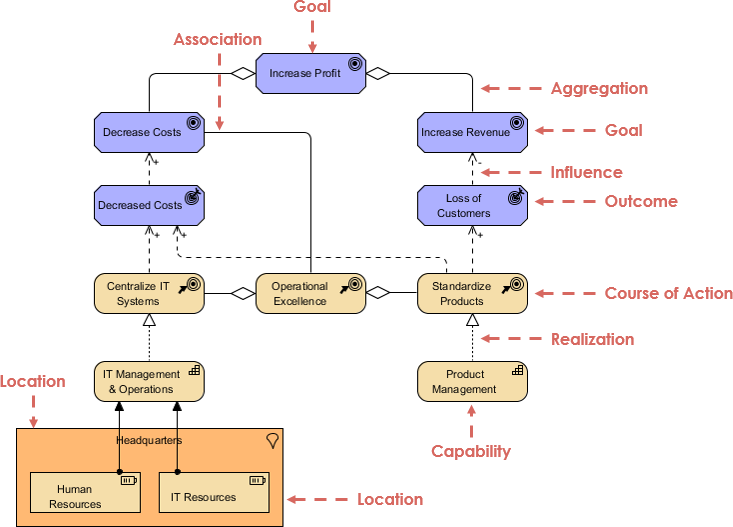The additional concepts: Resource, Capability and Course of Action introduced in the new strategy layer makes ArchiMate 3.0 more relevant for capability-based planning and strategic activities within the enterprise. The enterprise architects now can take advantage of them for ensuring the alignment of business and IT in enterprise architecture development.
Structure Elements
Resource
Resources are a central concept in the field of strategic management, economics, computer science, portfolio management, and more. A resource represents an asset owned or controlled by an individual or organization. Resources are analyzed in terms of strengths and weaknesses, and they are considered when implementing strategies.

Resources can be classified as tangible and intangible assets.
Tangible Asset
- Financial assets (e.g., cash, securities, borrowing capacity),
- Physical assets (e.g., plant, equipment, land, mineral reserves),
Intangible asset
- Technology – patents, copyrights, trade secrets
- Reputation -brand, relationships; culture
- Human – skills/know-how, capacity for communication and collaboration, motivation
Resource Concept Example
They are often considered, together with capabilities, to be sources of competitive advantage for organizations. The name of a resource should preferably be a noun.
In the example below, the IT Management & Operation capability is assigned with two resources (Haman Resources and IT Resources) for enabling the capability in the organization

Note That:
Resources are being limited, they can often be a deciding factor for choosing which strategy, goal, and project to implement and in which order.
Behavior Elements
Capabilities are often used for capability-based planning, to describe their evolution over time. A capability represents an ability that an active structure element, such as an organization, person, or system, possesses. They provide a high-level view of the current and desired abilities of an organization, in relation to its strategy and its environment.

- Capabilities are typically aimed at achieving some goal or delivering value by realizing an outcome.
- Capabilities help to reduce the gap from baseline to target architecture by focusing on business outcomes.
- Capabilities are realized by various elements (people, processes, systems, and so on) that can be described, designed, and implemented using Enterprise Architecture approaches.
For example:
- marketing
- IT management
Capability Concept Example
The figure below shows how resources are allocated for each of the capabilities

Course of Action
A course of action represents what an enterprise has decided to do, which is an approach or plan for configuring some capabilities and resources of the enterprise, undertaken to achieve a goal.

Strategies vs Tactics
- Courses of action can be categorized as strategies and tactics.
- It is not possible to make a hard distinction between the strategies and tactics
- Strategies tend to be long-term and fairly broad in scope, while tactics tend to be shorter-term and narrower in scope.
Strategy Layer Example – Aligning Motivation with Strategy Concepts
